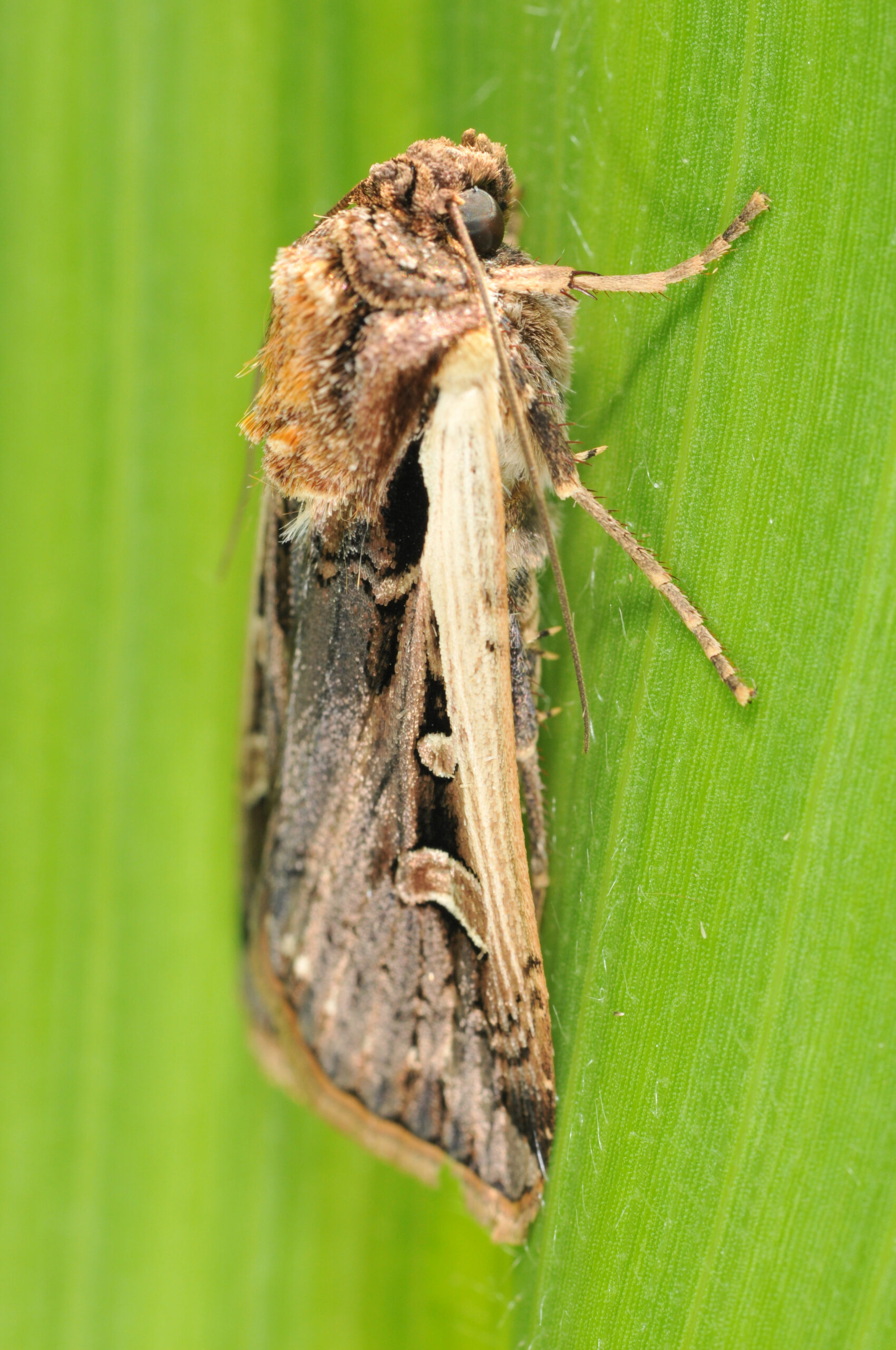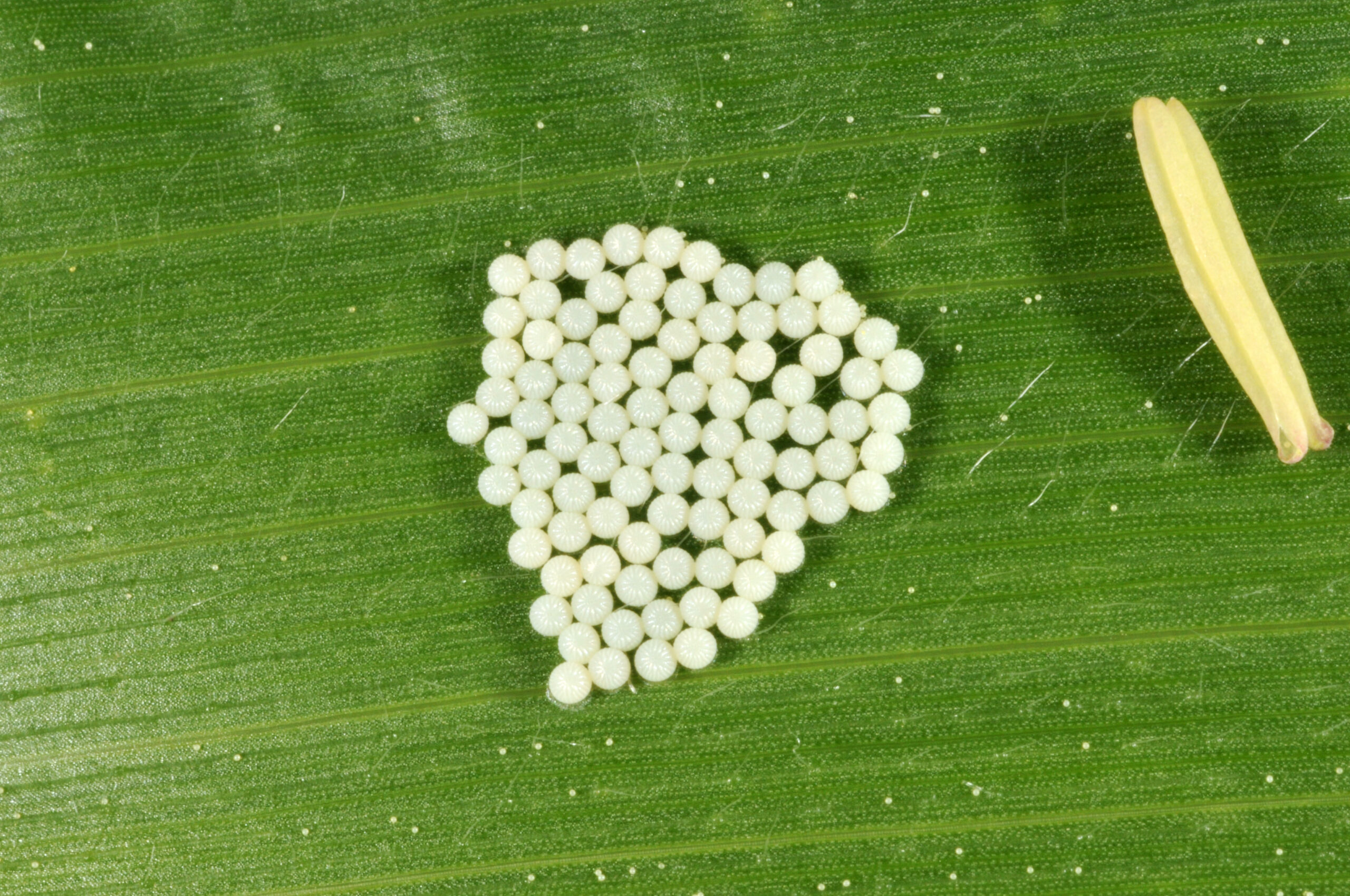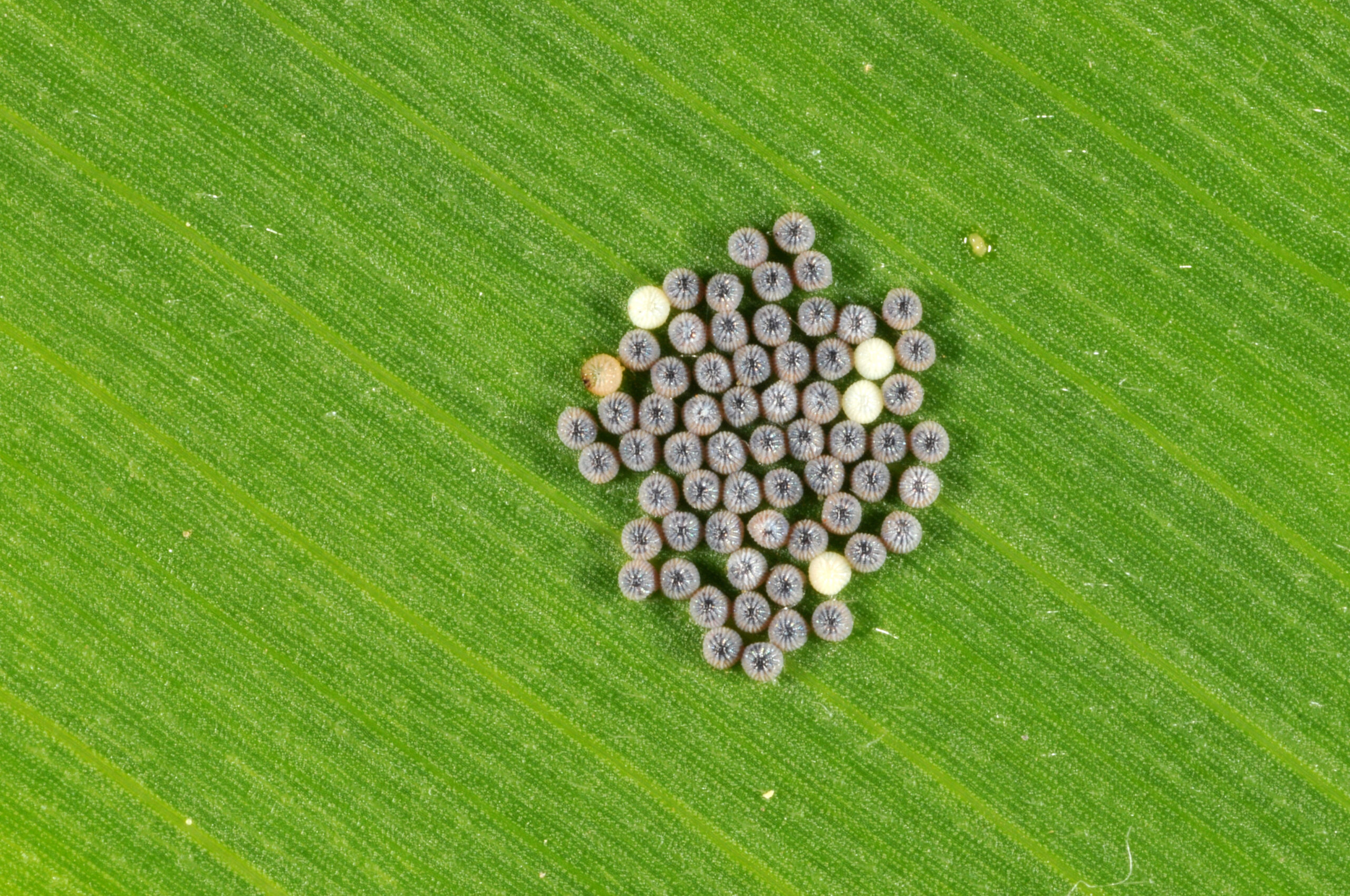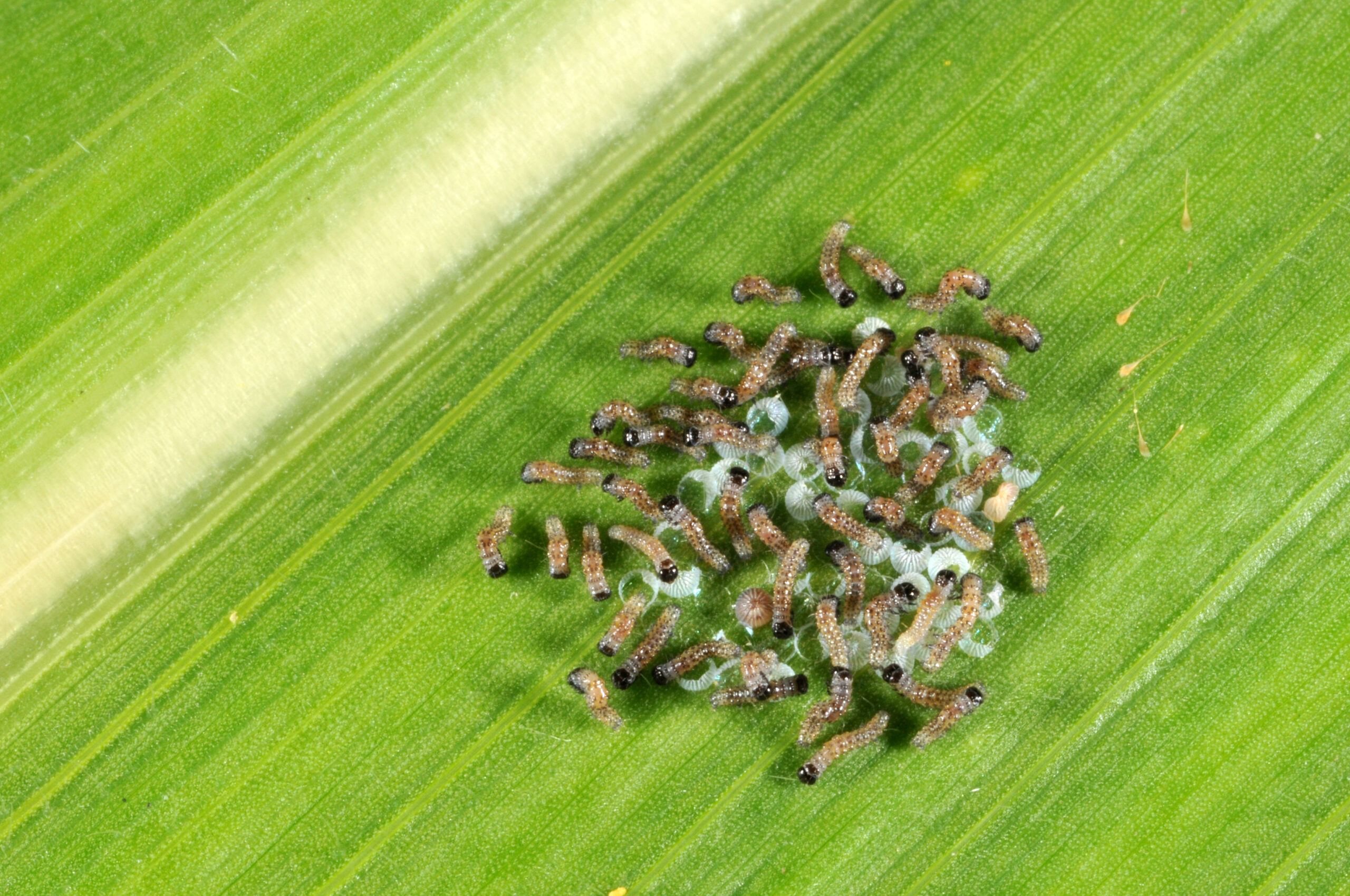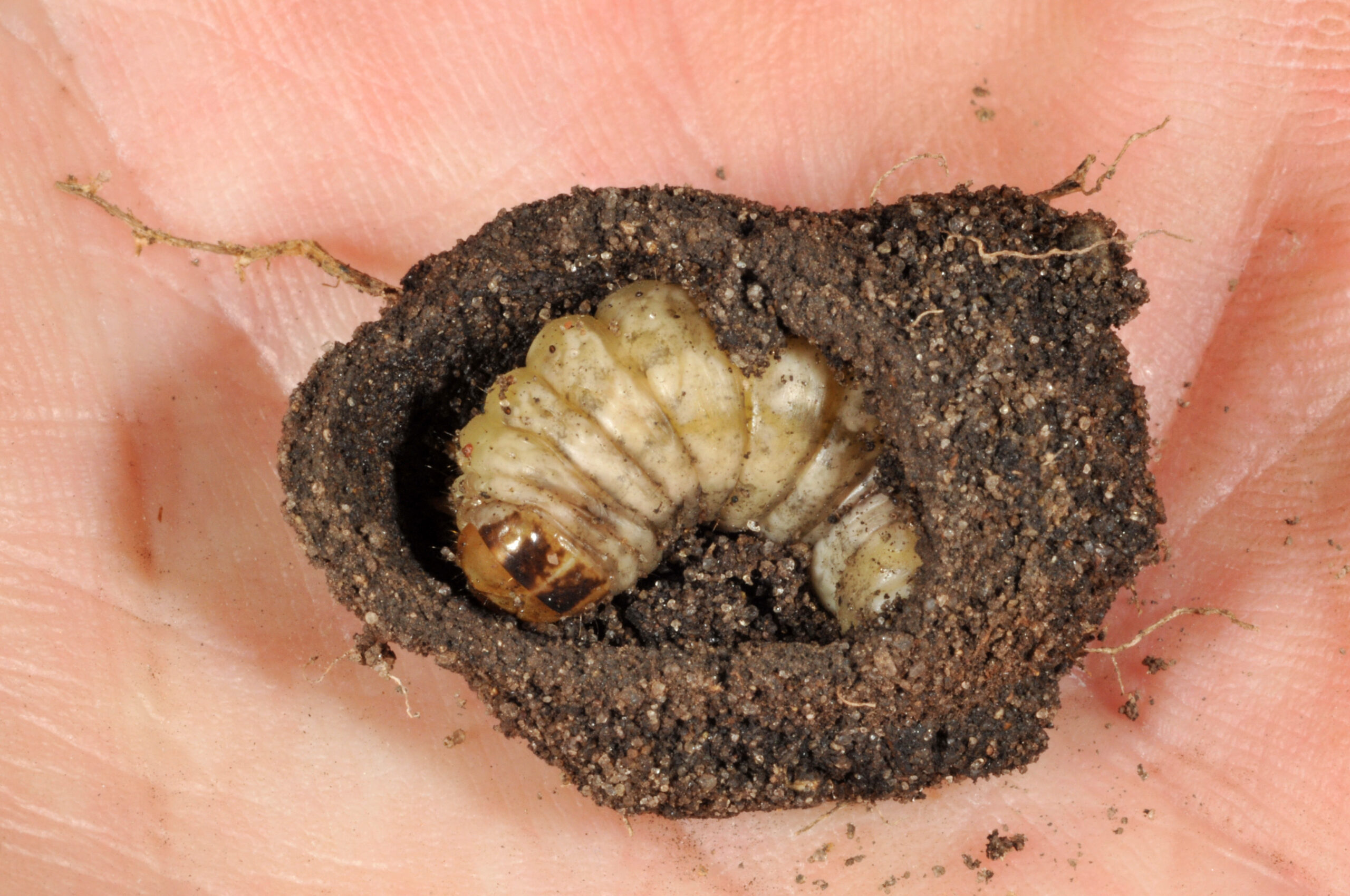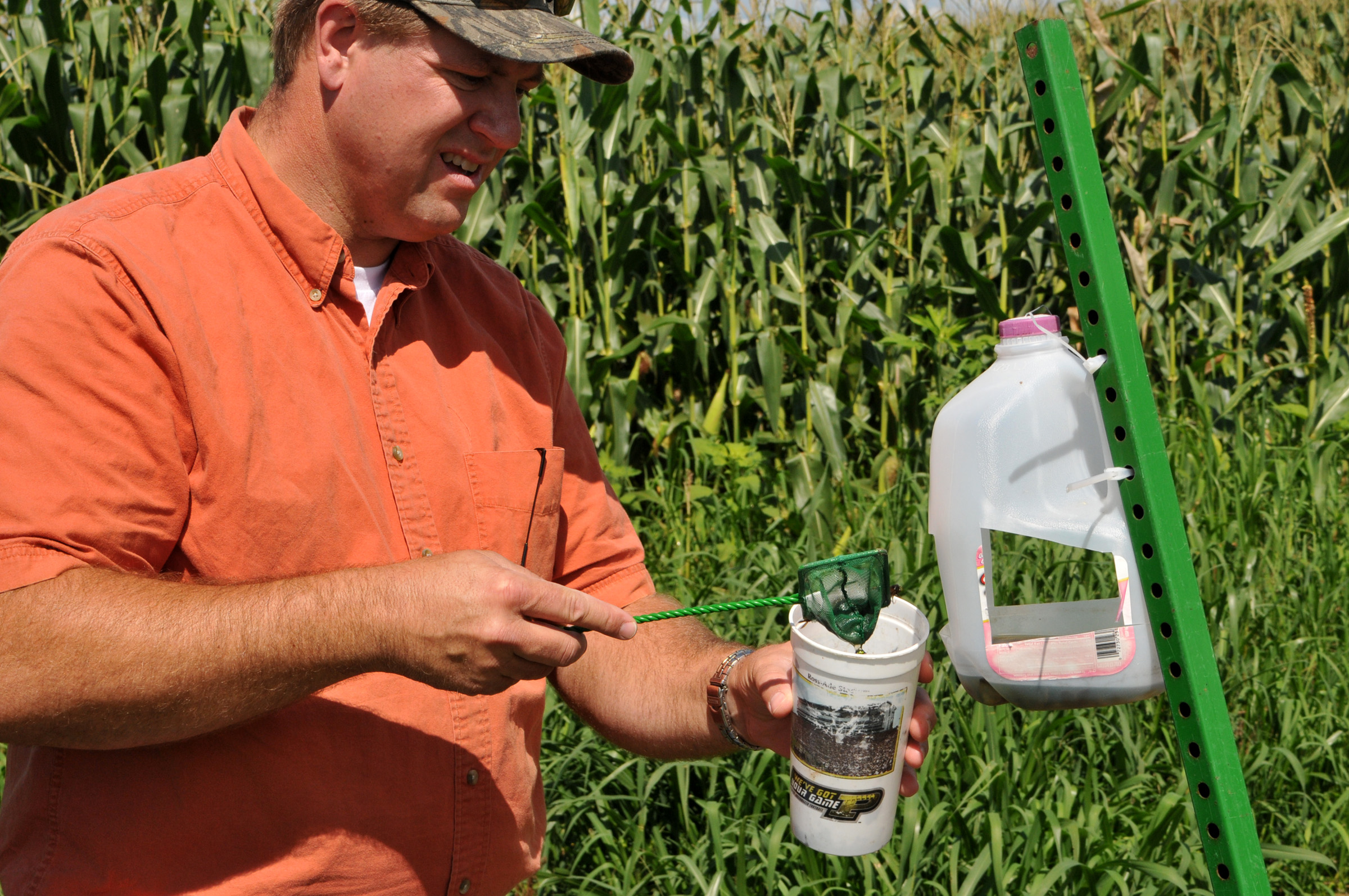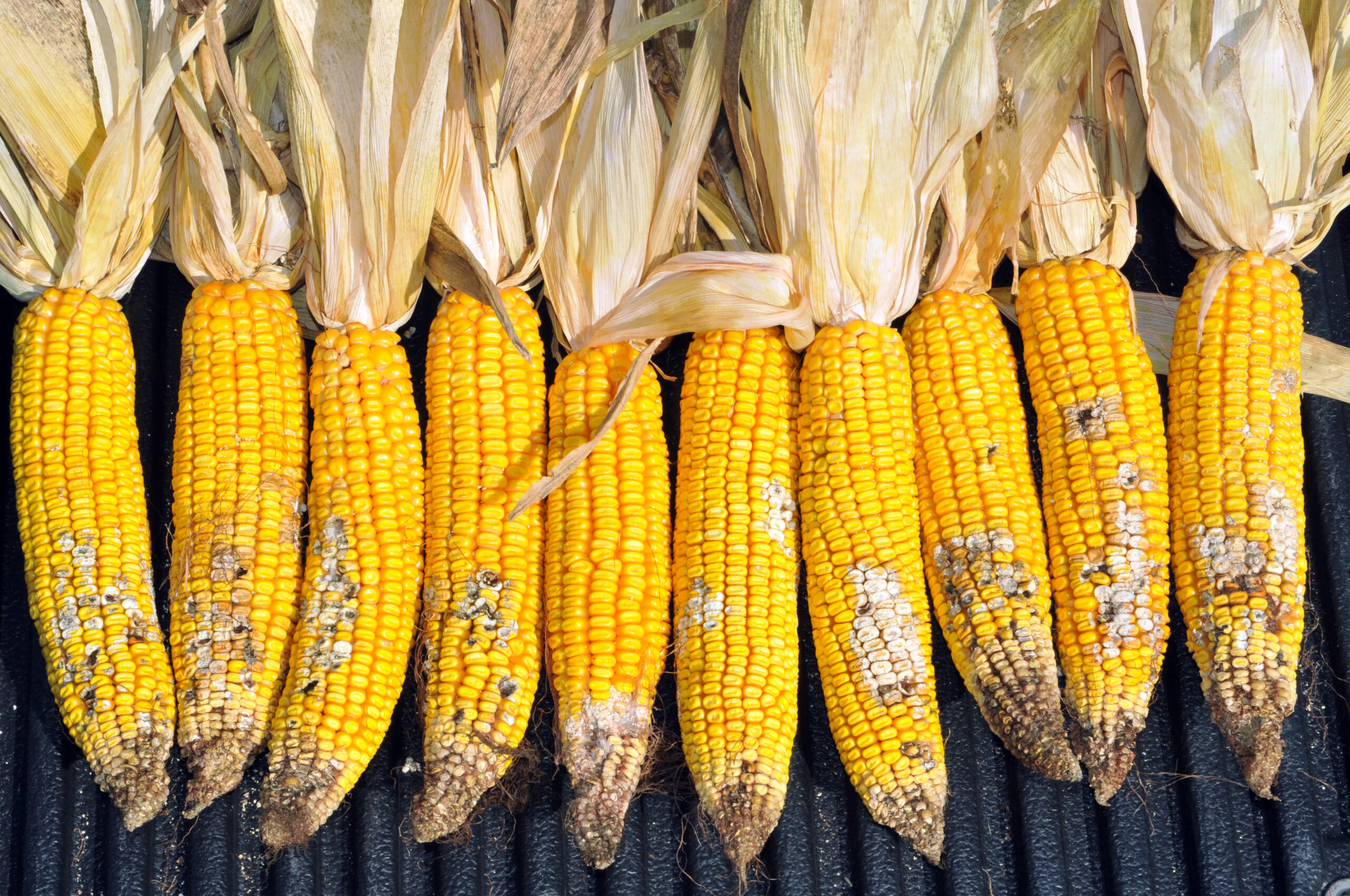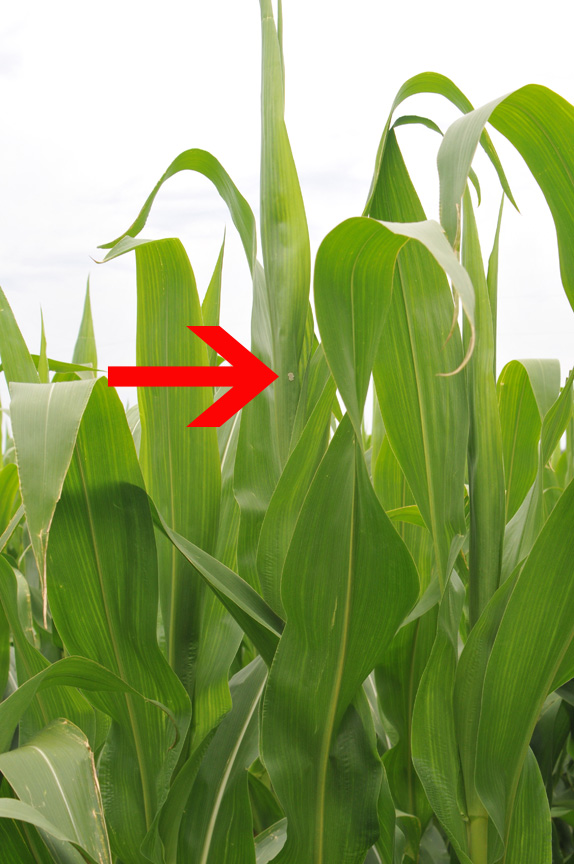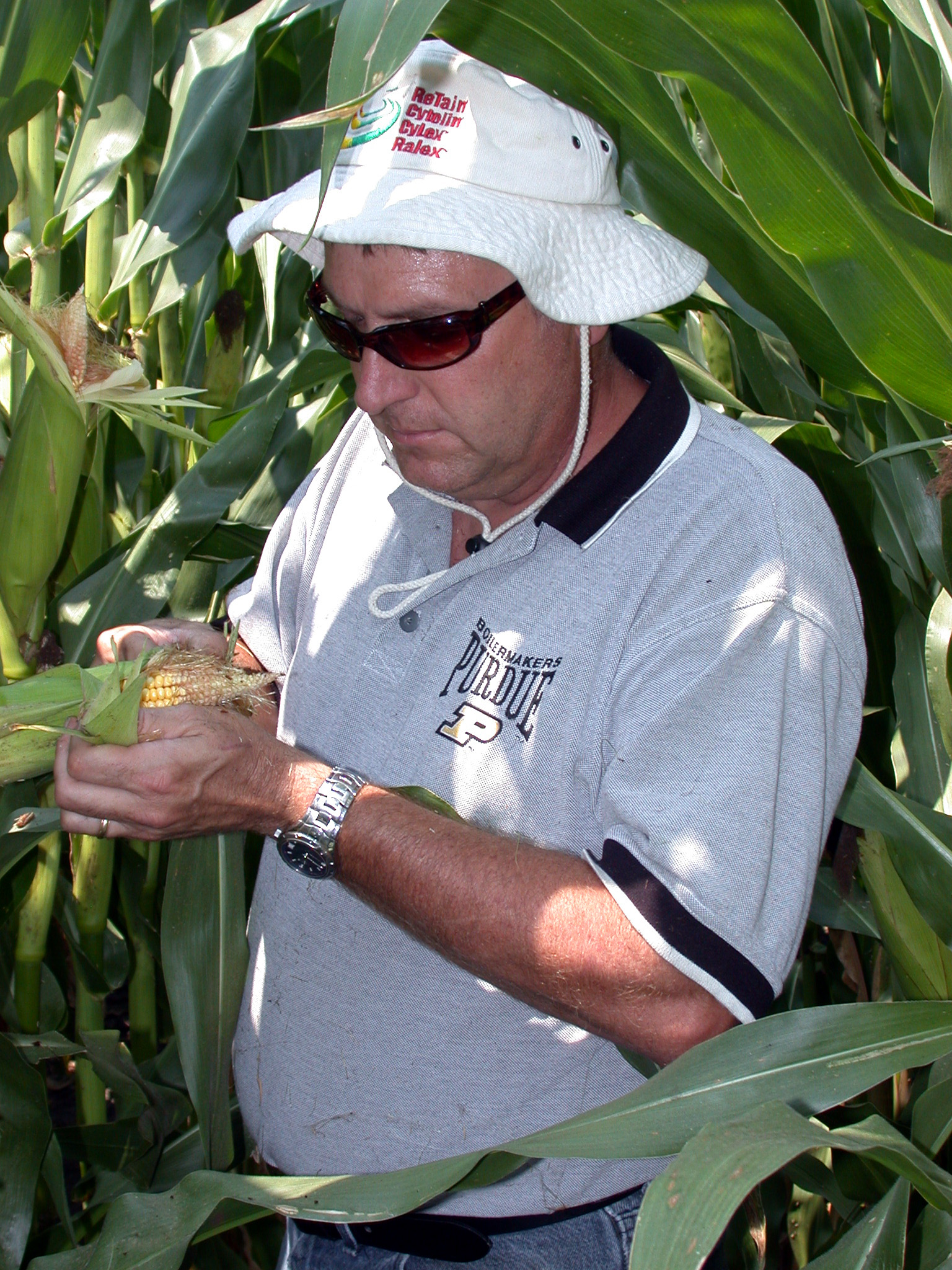Western Bean Cutworms
Western Bean Cutworms (Corn)
Striacosta albicosta (Smith)
Search the Pest & Crop Newsletter

The ability to see these full-sized life-cycle images is currently disabled to resolve an issue.
Related Video Resources:
Appearance and Life History
The Western Bean Cutworm is a native of North America that has expanded its range eastward from the Great Plains region. Although primarily a corn pest in Indiana, the name originates from the propensity of the larvae to also feed upon dryland beans (but not soybeans). They are a late-season pest of field corn and have the potential to cause both yield loss and degrade quality of grain as a result of larval feeding that facilitates the entry and growth of a range of ear rot fungi. Control before larvae enter the ear is critical.
Egg laying preference is on corn soon to pollinate. Eggs will be laid on upper surfaces of leaves, often on leaves near the whorl that have not unfolded completely and vertical in orientation. Eggs are laid in masses of 20-200, but usually average around 50. Eggs are white when first laid, and become tan as eggs begin to develop. In about a week, eggs develop a purple coloration, indicating that hatch is imminent.
Newly-hatched larvae are initially dark with black heads, this color will lighten to a light tan or pinkish hue with subtle longitudinal stripes as they develop further. 4th-instar and larger larvae, ½ to 1-1/2 inches long, are readily identified by 2 black “rectangles” behind the now-orange head, and a generally smooth skin or cuticle (i.e. lacking tubercles, warts, or bumps). There are 6 larval instars, the 6th is most conspicuous and often found feeding inside husks anywhere on corn ears.
Moth emergence from the soil begins in early July and usually peaks in the middle of the month, when male moths can be monitored using pheromone traps. Female moths will mate and lay eggs during July and August and will oviposit on a variety of cultivated and wild plants, although dryland beans and field corn are the most commonly chosen oviposition sites. Cornfields in the late whorl stage are preferred by female moths, who are seeking to lay eggs on corn that is near (but not past) pollination. Entry holes and/or frass are not always visible, so scouting for larvae may include investigating leaf axils where pollen collects or removing husks later in season.
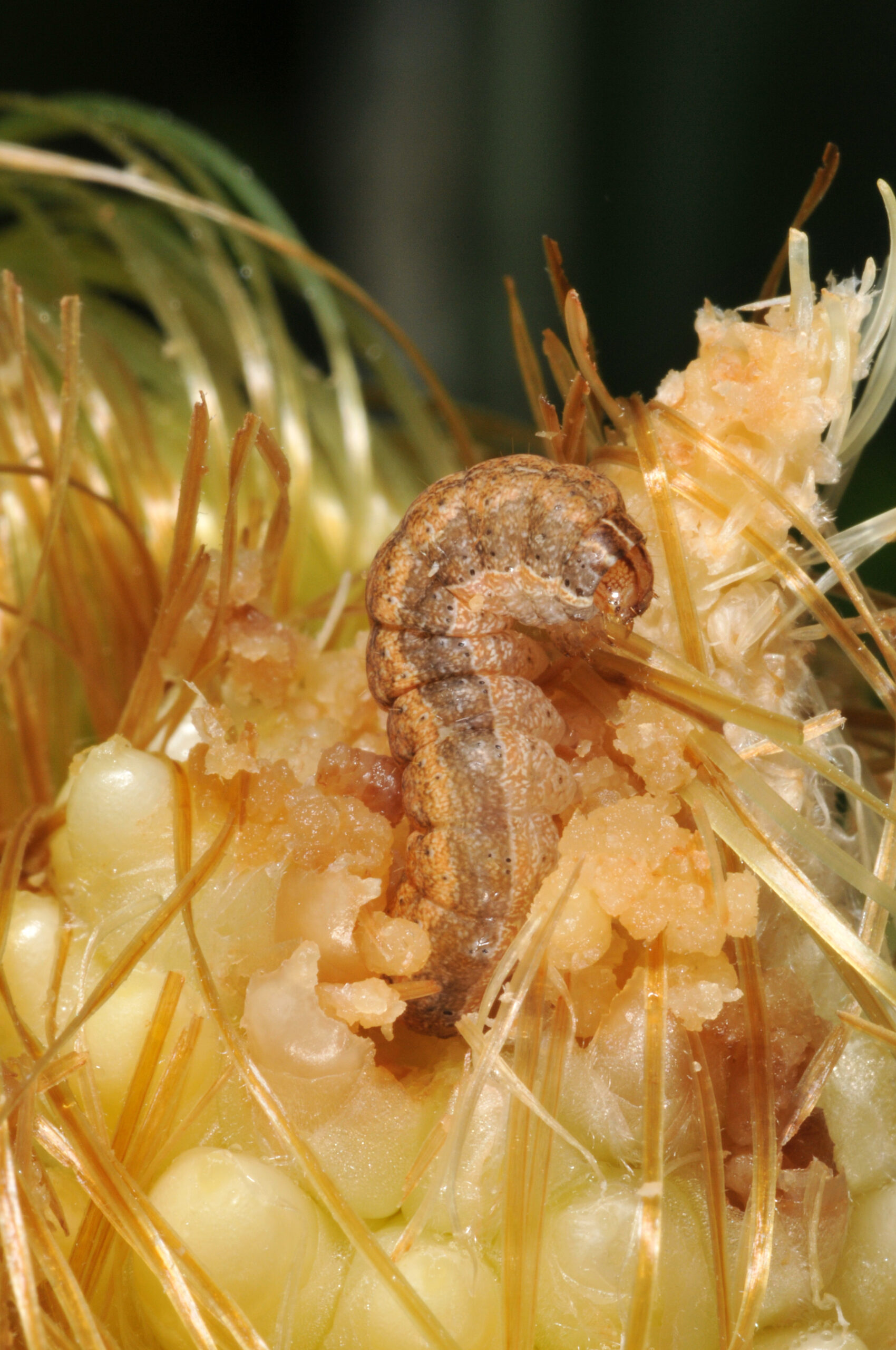
frass at the ear tip
Photo by J. Obermeyer
Damage
In late summer and early fall, 6th instar larvae drop off the plant and burrow into the soil, where they construct an earthen chamber using salivary gland secretions. Sandier soils allow for larvae to penetrate deeper into the soil profile. This increases winter survival and avoidance of tillage implements. They will remain in a quiescent state (pre-pupa) throughout the winter and will pupate and complete development during the following spring and early summer.
Oviposition and subsequent damage are often very patchy in fields. Multiple larvae may feed on a single plant/ear. There is considerable inter-plant movement early in life which results in infestation of neighboring plants. Most feeding is concentrated on the ear, and yield studies conducted in Iowa and Nebraska have shown that an average of one larva/plant throughout the field may cause yield loss of approximately 4 bu/acre. Damaged kernels are prone to molds, decreasing grain quality of food-grade corn varieties. At harvest, many emergence holes may be noticed in dry husks, this is often the first indication that WBC has been present in the fields that haven’t been monitored.
Sampling Method
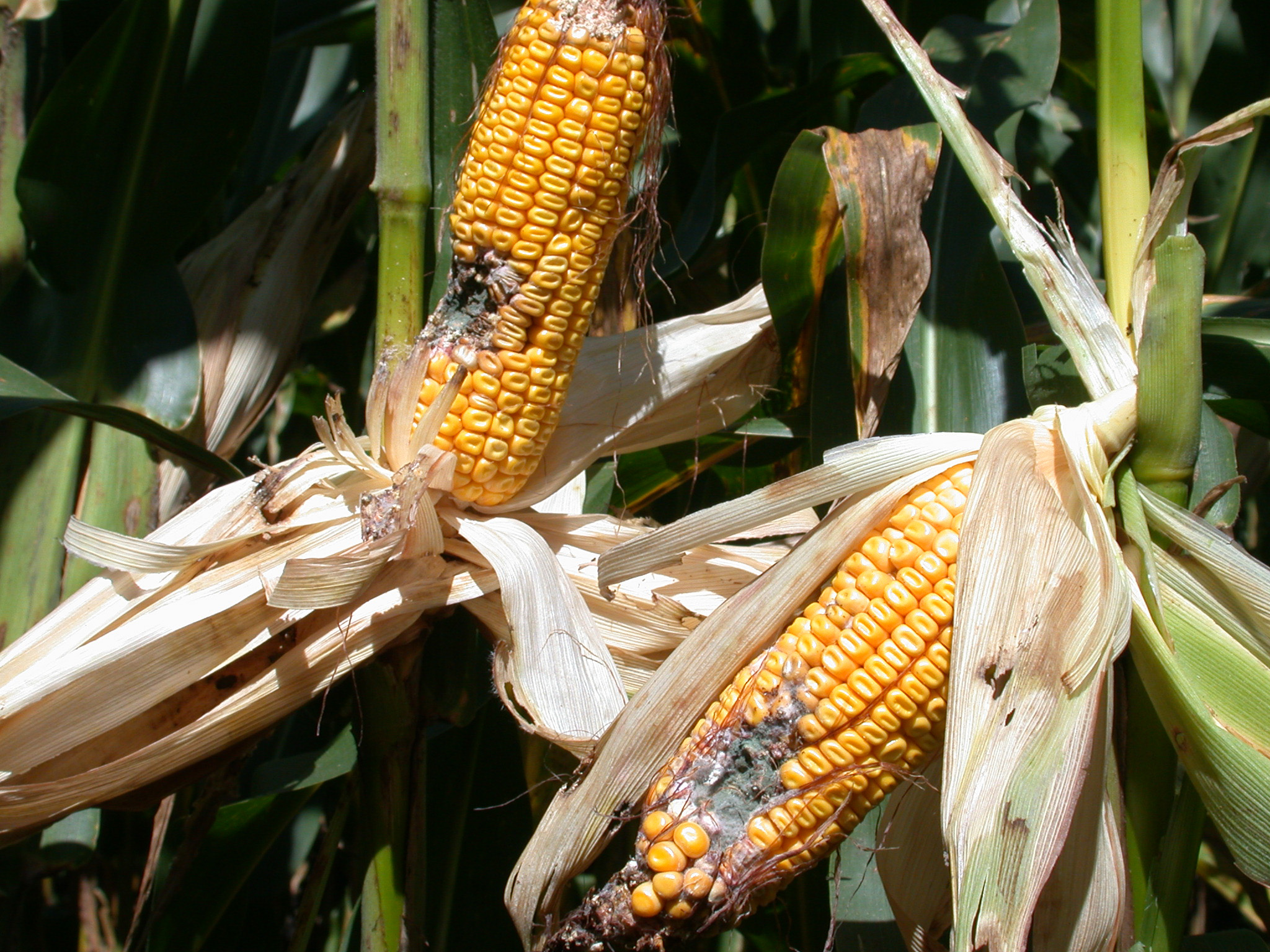
the damaged areas of these ears
Photo by J. Obermeyer
- Use pheromone traps to target scouting efforts.
- Place traps by mid-June and check and empty weekly.
- Begin scouting when multiple moths are captured with frequency.
- Initially, focus monitoring upon fields that are just beginning to, or soon will, shed pollen.
- 5 (minimum) areas of a field, 20 consecutive plants
- Examine the upper surfaces of new and not-yet unfolded leaves of the plants.
- Examine upper leaf axils, tassels (before pollen shed), and silks for young larvae.
- Multiple field visits, over the span of several weeks will be necessary.
Management Guidelines
- The patchy and cryptic nature of this pest make it a challenge for pest managers. Monitoring and early detection are critical for application of foliar insecticides.
- Economic threshold: We recommend a threshold to 5% of plants with egg masses and/or young larvae.
Insecticide application should be timed so that 90-95% of tassels have emerged. If tassels have already emerged and egg hatch is underway, applications should occur when 70-90% of eggs have hatched. Larvae must encounter insecticide or residue before entering the ear – once they enter the ear, insecticide applications are not as likely to contact larvae, making control difficult.
Transgenic options: Not all Bt corn hybrids will control Western Bean Cutworm. Check with your state Cooperative Extension Service for traits that control this pest.

Pests Have Pests

western bean cutworm remains and feeding.
Photo by J. Obermeyer
In the years that western bean cutworm have been known to occur in Indiana, several predators have made them a food source. Though it is unlikely that vertebrate and invertebrate natural enemies will prevent western bean cutworm populations from becoming economically important in all fields, it is important to recognize their potential to dramatically reduce larval numbers without use of insecticides.


